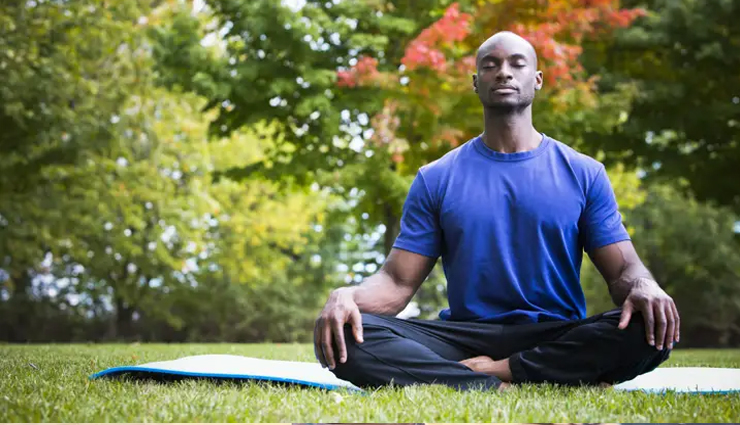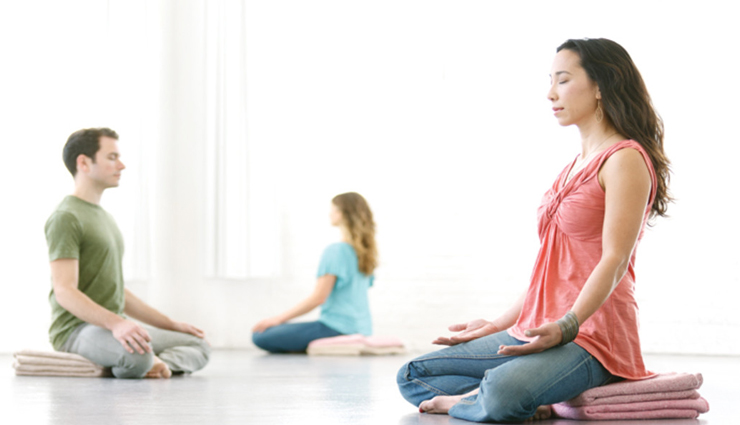- Home›
- Healthy Living›
- Different Techniques To Try Meditation For Peaceful Life
Different Techniques To Try Meditation For Peaceful Life
By: Varsha Fri, 02 Oct 2020 10:20:37

First, it’s helpful to become familiar with the meaning of mindfulness, as well as how it relates to meditation. Mindfulness is the quality of being present and fully engaged with whatever we’re doing at the moment—free from distraction or judgment, and aware of our thoughts and feelings without getting caught up in them. We train in this moment-to-moment awareness through meditation,allowing us to build the skill of mindfulness so that we can then apply it to everyday life. In teaching the mind to be present, we are teaching ourselves to be live more mindfully — in the present, taking a breath, not beholden to reactive thoughts and feelings — which is particularly helpful when faced with challenging circumstances or difficult situations.

Mindfulness meditation doesn’t only change our mindset and perspective, it actually can change the shape of our brains. Generalized neuroimaging meditation studies found that 8 weeks of mindfulness meditation also changes our brains, rewiring them towards more positive thoughts and emotions.For starters, meditation allows us to move from high-frequency brain waves to a lower frequency, which activates (and, potentially even more
importantly, deactivates) certain areas of the brain. For example, it can decrease neurological connections to the medial prefrontal cortex,or the “me center,” diminishing traits such as fear, stress, and anxiety. In turn, meditation can also build new pathways to the parts of the brain responsible for traits like focus and decision-making.And that’s not all: mindfulness meditation can actually change the shape of the brain as well, a process known as neuroplasticity. Research shows that gray matter — the area of the brain responsible for emotional regulation, planning, and problem-solving — as well as the cortical thickness — responsible for learning and memory — both increase with
regular meditation practice. Alternatively, the amygdala, which regulates how we feel stress, fear, and anxiety, decreases in size.

8 meditation techniques that cultivate mindfulness
Here’s a breakdown of eight of the more popular mindfulness techniques —all of which are used in the Headspace app. Some will sound intriguing,while others may not be your cup of tea. See which ones work best for you.
1. Focused Attention:
Likely the most common form of meditation, this technique uses the breath to anchor the mind and maintain awareness. Focus your attention on the breath — specifically the rise and fall of the chest — and return to the breath whenever you get distracted or notice your mind starting to wander.

2. Body Scan: This technique, which uses meditation to connect with the body, involves scanning your body from head to toe and being aware of any discomfort, sensations, or aches that exist (which could be indicators of stress and anxiety).
3. Noting: This is a mindfulness technique in which you “note” a particular thought or feeling when you become distracted during meditation. The practice of noting helps to create space and learn more about our habits, tendencies, and conditioning.

4. Loving Kindness: Instead of focusing on the breath, this technique involves focusing on the image of different people: people we know, people we don’t; people we like, people we don’t. We direct well-wishes and goodwill first to ourselves, and then, as a ripple effect, to others, which helps us let go of unhappy feelings we may be experiencing.
5. Skillful Compassion: Similar to the loving kindness meditation technique, this one involves focusing on a person you know or love and paying attention to the sensations arising from the heart. It’s aptly named because it’s thought to be helpful in opening our hearts and minds for the benefit of other people, which in turn fosters a feeling of happiness in our own mind.

6. Visualization: This technique uses visualization, to focus on a person or something more abstract, to hold attention. The idea here is that the familiar image will help create and maintain a relaxed focus.
7. Resting Awareness: Rather than focusing on the breath or a visualization, this technique involves letting the mind rest; thoughts may enter, but instead of distracting you and pulling you away from the present moment, they simply leave.
8. Reflection: For this technique, ask yourself a question, for example, “What are you most grateful for?” (Note that asking yourself a question using the second person — you — will discourage the intellectual mind from trying to answer it rationally.) Be aware of the feelings, not the thoughts, that arise when you focus on the question.





